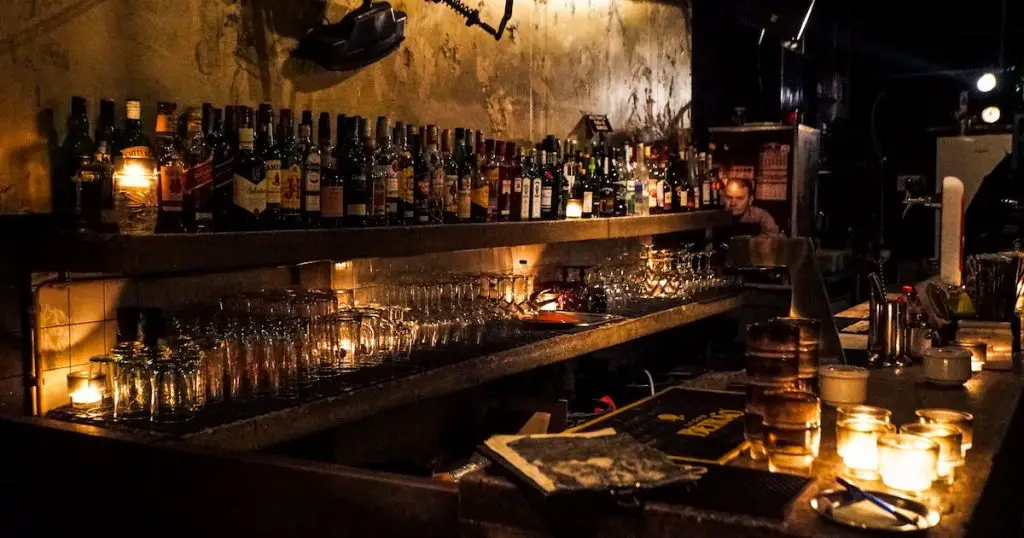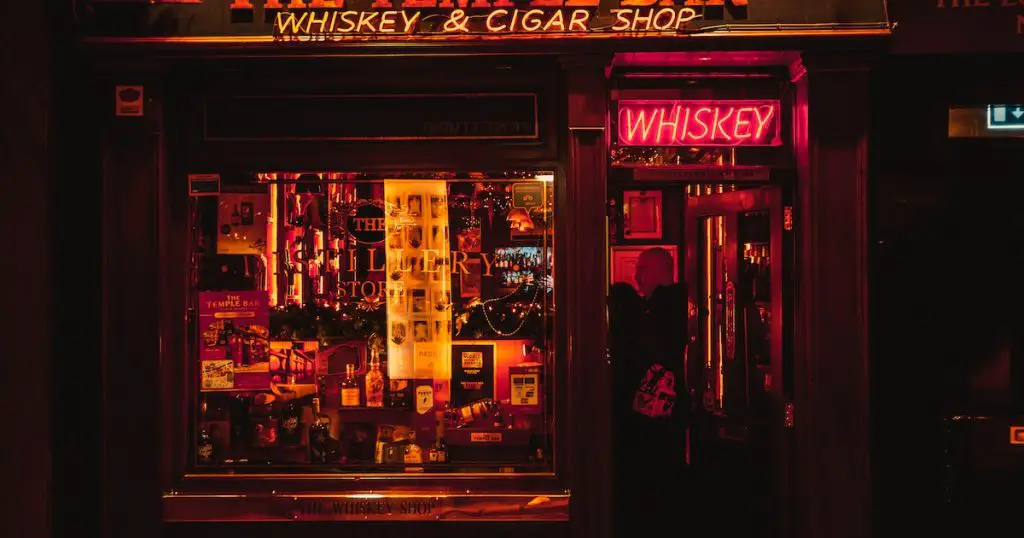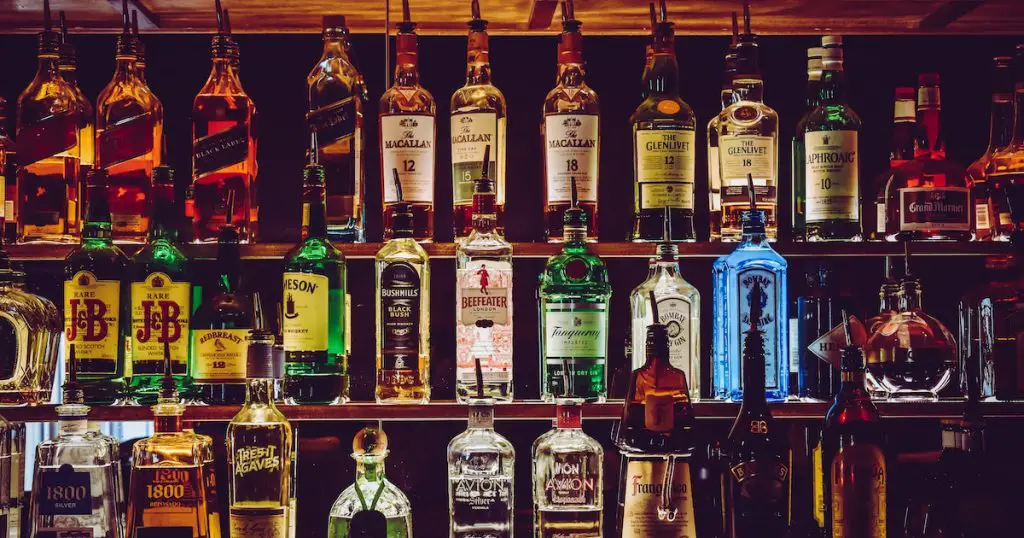Nestled in the heart of Arizona, downtown Prescott stands as a testament to time. Central to its character and history is Whiskey Row, an iconic stretch that’s witnessed the ebbs and flows of the past century.

The Preservation of Whiskey Row in downtown Prescott isn’t just about protecting old buildings—it’s about preserving a legacy, a story, and the soul of a community.
The Origin of Whiskey Row
Whiskey Row’s inception is steeped in the adventurous spirit of the American West. Born during the late 19th century, this iconic stretch in Prescott was once home to numerous saloons, hotels, and establishments that catered to the diverse crowd of miners, ranchers, and settlers seeking fortune and solace in the frontier town.
As the name suggests, “Whiskey Row” became synonymous with its bustling taverns, where tales of gold strikes, cowboy escapades, and frontier dreams echoed amidst clinks of glasses.
This row, which began as a mere cluster of establishments, soon transformed into the social and economic heart of Prescott, setting the stage for the rich tapestry of events and stories that would shape its enduring legacy.
Prescott in the Late 19th Century
Back in the late 1800s, Prescott was a thriving hub, bustling with miners, ranchers, and adventurers. Drawn by the allure of gold and the promise of prosperity, they flocked to this frontier town, building its reputation and setting the foundation for its vibrant social scene.
The burgeoning downtown area, particularly Montezuma Street, soon became the nucleus of all activities. But as dusk fell, the very essence of this street began to change, transitioning from the business center by day to the entertainment hotspot by night.
Establishment of the First Saloons
Saloons sprang up like wildflowers, catering to the thirst of locals and travelers alike. By the turn of the century, over 40 saloons lined what would soon be affectionately dubbed ‘Whiskey Row.’ It wasn’t just about the liquor, though.
These saloons became social centers, where stories were shared, deals were struck, and friendships formed. HistoryNet offers a deeper dive into the social role of these Western saloons.
The Golden Age: Whiskey Row’s Peak
During its Golden Age, Whiskey Row pulsated with unparalleled vibrancy and life. It was a time when saloons, dance halls, and gambling establishments thrived side by side, drawing residents and wanderers alike into its magnetic embrace.
The air was thick with the melodies of pianos and laughter, the sidewalks bustling with cowboys, miners, and entrepreneurs seeking fortunes or just a good time. Every establishment echoed with stories, be it of triumphant gold finds, tales of the Wild West, or simple camaraderie among townsfolk.

This era, marked by prosperity, entertainment, and a dash of notoriety, cemented Whiskey Row’s place in history, encapsulating a period where Prescott’s heart beat loudest and proudest.
Booming Businesses and Local Entrepreneurs
Whiskey Row’s reputation soared during the early 20th century. Beyond saloons, it was home to thriving businesses, from hotels to opera houses. Local entrepreneurs saw the potential and capitalized on it.
People like “Bucky” O’Neill, a notable businessman and later Rough Rider, contributed to its flourishing landscape. This was Whiskey Row’s golden age, where the pulse of Prescott’s social and economic life reverberated.
Diverse businesses added richness to its tapestry. There were barbershops where men shared the latest news, and mercantile stores showcasing goods from the East. The streets echoed with laughter, music, and the clink of glasses.
The Cultural Impact: More Than Just Saloons
It’s a misconception that Whiskey Row was just about, well, whiskey. Its cultural impact ran deeper. Theaters showcased plays and musicals, while dance halls swayed to the rhythm of live bands.
Whiskey Row was a microcosm of society, reflecting the values, aspirations, and challenges of its people. It was here that diverse communities met, forging connections that transcended backgrounds. The Prescott Public Library houses archived letters and diaries, offering personal insights into this era.
Architectural Gems
Nestled within Whiskey Row are architectural marvels that capture the essence of eras gone by. These structures, with their intricate facades, ornate detailing, and distinctive designs, stand as silent witnesses to the passage of time. From Victorian-era motifs to elements of the Wild West, each building has a unique tale etched into its bricks and beams.
Balconies that once hosted lively gatherings, aged wooden doors echoing with whispers of old tales, and windows reflecting both the past and the present, contribute to the Row’s enchanting atmosphere.
These architectural gems not only add to Whiskey Row’s aesthetic allure but also offer a tangible connection to the pivotal moments in Prescott’s history, making them indispensable to the town’s cultural fabric.
The Iconic Buildings and Their Stories
Whiskey Row isn’t just famed for its vibrant history, but also its unique architecture. Buildings like the Palace Saloon stand as timeless monuments. Built-in the 1870s, the Palace, with its classy wooden interiors and period artifacts, transports visitors back in time.
Another marvel is the Burk’s Hotel, a symbol of Victorian elegance in frontier Arizona. Every brick-and-mortar on Whiskey Row has a story, echoing with tales of the past.
Victorian Influence in Frontier Arizona
Prescott’s architecture was heavily influenced by the Victorian style prevalent in the late 19th and early 20th century. Whiskey Row showcases this with its ornate facades, large windows, and intricate woodwork.
These designs, juxtaposed with the ruggedness of the Wild West, created a unique aesthetic, which ArchDaily elaborates on in their articles about architectural styles.
Challenges Over the Years
Whiskey Row, as an emblematic part of Prescott’s history, has weathered numerous challenges over its storied existence. From devastating fires that once razed it to the ground to economic downturns threatening its vibrancy, the Row’s journey hasn’t been without hurdles.
Modernization, with its double-edged sword, posed both opportunities and threats. The push for urban development at times risked overshadowing its historic charm while changing societal norms and preferences demanded adaptability.
Each era brought its own set of trials, be it the complexities of maintaining aging infrastructure or the socio-economic pressures of evolving times. Nonetheless, Whiskey Row’s enduring spirit has consistently risen to meet these challenges, evolving and adapting while honoring its rich legacy.
The Great Fire of 1900: Rebirth from Ashes
Tragedy struck in July 1900 when a devastating fire consumed much of Whiskey Row. But like a phoenix, the community rose from its ashes, rebuilding with even greater vigor.
Today’s brick buildings, replacing the original wooden structures, are a testament to Prescott’s resilience.
Prohibition Era and Its Effects on Whiskey Row
Prohibition in the 1920s posed a challenge. Saloons turned into soda shops, and secret speakeasies emerged. Despite the odds, the spirit of Whiskey Row remained unbroken.
It adapted, showcasing the community’s ability to weather any storm. For more on the Prohibition Era’s nationwide effects, History.com offers a comprehensive overview.
Preservation Efforts
The commitment to preserving Whiskey Row’s legacy has been nothing short of remarkable. With each passing year, this historic stretch faces the natural wear of time, and yet, it stands resilient, a testament to the concerted efforts of the community, local government, and preservation organizations.
These collaborations have seen dilapidated structures rejuvenated, original facades maintained, and the spirit of the 1800s kept alive. Grants, fundraisers, and community-driven projects converge to ensure that every beam and brick echoes the tales of yesteryears.
By prioritizing preservation, not only does Prescott keep a tangible piece of its history intact, but it also ensures that future generations can walk the Row, feeling the weight of stories that shaped the town.
The Rise of Conservation Movements
As urbanization threatened to erase historic landmarks, local movements rallied to preserve Whiskey Row. Organizations like the Prescott Downtown Partnership spearheaded these efforts, ensuring the Row’s charm was intact for future generations.

Numerous organizations, including the Sharlot Hall Museum, played a pivotal role. They organized fundraisers, and awareness campaigns, and even purchased properties to protect them from potential demolition.
Key Restoration Projects and Success Stories
Several buildings underwent restoration. The Palace Saloon, for instance, was restored to its former glory, complete with authentic interiors.
Success stories like these are a testament to the community’s dedication. The National Trust for Historic Preservation showcases other such successes across the country.
Economic Significance of Preservation
Preserving Whiskey Row isn’t merely a nod to the past; it carries significant economic implications for Prescott. The Row, with its rich tapestry of history, acts as a magnet for tourists, thereby boosting local businesses and fostering job opportunities. Every brick and facade saved translates into dollars spent in cafes, shops, and nearby attractions.
Beyond immediate tourism revenue, preservation ensures the longevity of this economic influx, making it a sustainable source of income for the community. Additionally, the act of restoration often stimulates local economies, as craftsmen, laborers, and historians collaborate to breathe life into aging structures.
In essence, by safeguarding Whiskey Row’s heritage, Prescott secures a prosperous economic future.
Tourism: Drawing Visitors from Around the Globe
Whiskey Row became a major tourist draw. Visitors flocked to experience its charm, boosting local businesses and adding to Prescott’s economy.
- Unique shopping experiences
- Authentic Western saloons
- Guided historical tours
Restoration projects created jobs. Local businesses, from cafes to souvenir shops, thrived due to increased footfall. Whiskey Row’s preservation became an economic catalyst for Prescott.
Modern Challenges and Adaptations
Whiskey Row, despite its rich history, isn’t immune to the challenges of modern times. Balancing the preservation of its iconic structures with the need for contemporary amenities presents a unique conundrum.
As urbanization advances and visitor demographics shift, the Row grapples with integrating state-of-the-art infrastructure without diminishing its historical essence.
Environmental concerns, from waste management spurred by tourism to sustainability practices, also come to the forefront. Yet, with these challenges come opportunities for adaptive solutions.
Leveraging modern technology and innovative architectural designs, Whiskey Row continues to reinvent itself, ensuring it remains both relevant and revered in today’s dynamic landscape.
Balancing Modernization with Historical Integrity
The need for modern amenities and infrastructures is undeniable. However, integrating them without compromising the Row’s historical charm is a delicate task.
Adaptations like underground wiring or retrofitting buildings with green technologies are examples of how preservation meets modernity.
Addressing Economic and Environmental Concerns
While tourism boosts the economy, it brings concerns like congestion, waste management, and environmental sustainability. The city, along with local organizations, works tirelessly to address these, ensuring Whiskey Row remains a cherished destination.
Initiatives for green tourism and sustainable business practices are steps in this direction. For more on sustainable tourism practices, The World Tourism Organization (UNWTO) provides valuable insights.
The Future of Whiskey Row
Whiskey Row, with its storied past and undeniable charm, is poised for a future where history and innovation intertwine. As the heart of Prescott, its continued preservation promises to blend the nostalgia of yesteryears with the vibrancy of tomorrow.
With a community passionately committed to its legacy and modern technological advancements aiding preservation, the Row is set to evolve while staying rooted in its origins. In the years to come, visitors and locals alike will witness a Whiskey Row that’s both a tribute to its illustrious past and a beacon of progress, making it an enduring symbol of Prescott’s spirit.
Vision 2030: The Next Decade’s Plan
As we venture into this decade, plans are underway to further enrich Whiskey Row. From improved pedestrian zones to enhancing local transportation to better accommodate visitors, to using augmented reality apps to enrich historic tours – the vision is dynamic.

The community remains at the heart of all future endeavors. Their feedback, active participation in restoration projects, and commitment to sustainable practices will dictate Whiskey Row’s trajectory. After all, it’s the people who’ve always been the lifeblood of this iconic stretch.
FAQs:
In this section, we will be delving into some of the most common inquiries and curiosities that surround our topic.
Why is Whiskey Row so crucial to Prescott’s identity?
Whiskey Row is not just a physical location; it encapsulates Prescott’s rich history, culture, and indomitable spirit. Its preservation keeps the city’s heritage alive, making it integral to its identity.
How can individuals contribute to preservation efforts?
Community participation is key. Locals can join preservation societies, contribute to fundraisers, volunteer in restoration projects, or simply promote awareness about the importance of preserving Whiskey Row.
Are there tours available for visitors?
Absolutely! Guided tours, both physical and virtual, are available, offering deep dives into Whiskey Row’s fascinating past.
How does the local government support Whiskey Row?
The local government plays a pivotal role by sanctioning funds for restoration, granting permits for events, and collaborating with preservation organizations. Their support ensures Whiskey Row’s protection and growth.
What other historic sites in Prescott complement the Whiskey Row experience?
Prescott boasts other landmarks like the Sharlot Hall Museum, Fort Whipple, and the Prescott Historic Downtown. These sites, in conjunction with Whiskey Row, offer a comprehensive understanding of Prescott’s storied past.
Summary
In its bricks, in its streets, and in the air, Whiskey Row echoes tales from yesteryears. From its lively 19th-century origins to its contemporary cultural prominence, it remains an intrinsic part of Prescott’s heart. The efforts to preserve it aren’t merely about maintaining old buildings but ensuring that the spirit of a bygone era remains accessible to all.
As we move forward, the commitment to maintaining this delicate balance of old and new continues, ensuring that Whiskey Row remains a testament to Prescott’s resilience, adaptability, and undying spirit for generations to come.



Leave a Comment
You must be logged in to post a comment.